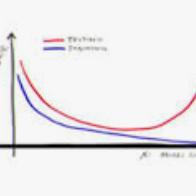Due to recent debate over the biological plausibility of backpropagation (BP), finding an alternative network optimization strategy has become an active area of interest. We design a new type of kernel network, that is solved greedily, to theoretically answer several questions of interest. First, if BP is difficult to simulate in the brain, are there instead \textit{trivial network weights} (requiring minimum computation) that allow a greedily trained network to classify any pattern. Second, can a greedily trained network converge to a kernel? What kernel will it converge to? Third, is this trivial solution optimal? How is the optimal solution related to generalization? Lastly, can we theoretically identify the network width and depth without a grid search? We prove that the kernel embedding is the trivial solution that compels the greedy procedure to converge to a kernel with Universal property. Yet, this trivial solution is not even optimal. By obtaining the optimal solution spectrally, it provides insight into the generalization of the network while informing us of the network width and depth.
翻译:由于最近关于反向适应(BP)的生物合理性(BP)的争论,寻找替代网络优化战略已经成为一个令人感兴趣的积极领域。我们设计了新型的内核网络,这种网络在理论上解决了贪婪,从理论上回答几个感兴趣的问题。首先,如果BP在大脑中难以模拟,那么是否就有一个贪婪的训练有素的网络来分类任何模式。第二,一个贪婪的、经过训练的网络能够聚集到一个内核吗?第三,这个微小的解决方案是最佳的吗?最后,我们能否在理论上确定网络的宽度和深度,而不进行网格搜索?我们证明内核嵌入是迫使贪婪程序与具有通用属性的内核相融合的微不足道的解决办法。然而,这种微不足道的解决办法甚至不是最理想的。通过光谱化获得最佳的解决方案,它能使我们了解网络的广度,同时告诉我们网络的宽度和深度。




